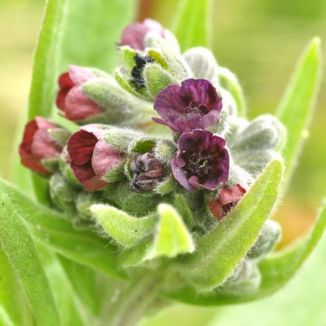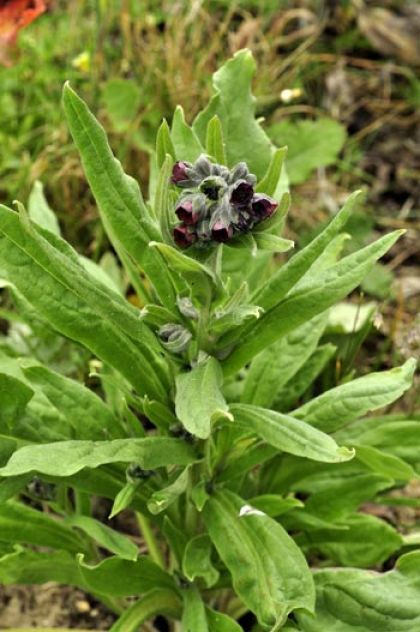Not the sort of wildflower that's threatened with overpicking, this is an upright, greyish and downy plant which grows to about 65cm high. A biennial, it overwinters as a rosette during its first year. In its second year, it has maroon 5-petalled funnel-shaped flowers (5-7mm across) which are borne in clusters on arching stalks, giving the flowerheads a drooping aspect. These bloom from June to August. The lanceolate, oblong leaves are roughly hairy, the lower leaves being stalked. The distinctive fruits consist of groups of four flattened bristly nutlets, well designed to transfer to animal fur or clothing thus helping dissemination. This is a native plant which is usually found growing on dry grassy land, near the coast. It is mostly confined to eastern parts of Ireland and it belongs to the family Boraginaceae.
I was fortunate enough to be introduced to this plant by a fellow member of the Wexford Naturalists' Field Club*, Janet Whelehan, in June 2009. This was near Arklow, Co Wicklow and the photographs were also taken at that time.
If you are satisfied you have correctly identified this plant, please submit your sighting to the National Biodiversity Data Centre




